
Some trees are just twisted – literally. Rather than growing in the usual linear pattern, their stems crazily zig and zag, each segment veering in a different direction from the previous one. If you’re in the lumber industry, this is not a desirable characteristic. On the other hand, if you’re looking for a garden specimen that possesses an attention-grabbing character, a contorted tree might be just the ticket. Here are a few of the best such trees for North American gardens.
Contorted beech (Fagus sylvatica ‘Tortuosa’)
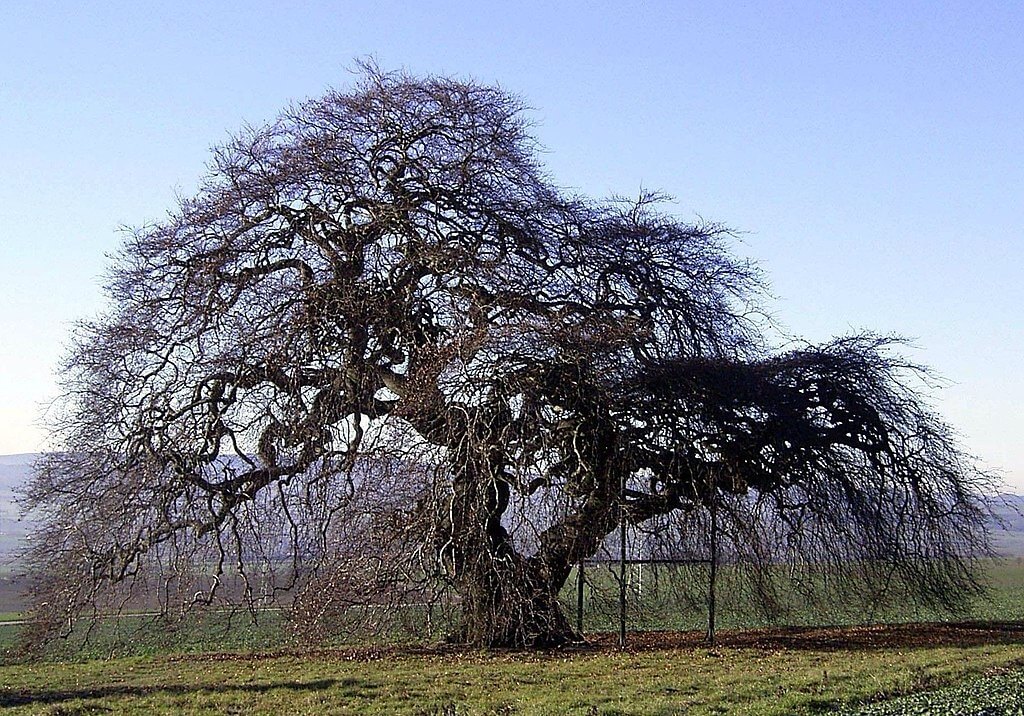
A dwarf, 20-foot tree that slowly develops into a gnarled gesticulating mass of veering branches, ‘Tortuosa’ looks like something that would adorn a haunted castle, or perhaps the dooryard of a slightly demented wizard. Because of the random nature of its growth, each ‘Tortuosa’ is utterly unique, with some individuals dominated by down-sweeping, cascading growth, and others twisting into horizontal knots. Its theatrically writhing silhouette qualifies it as a vista-dominating specimen. Plants are especially arresting in winter when their jagged structure is most starkly visible. The cultivar ‘Tortuosa Purpurea’ is much the same as ‘Tortuosa’, only with maroon foliage.
Dragon’s claw willow (Salix babylonica f. tortuosa)
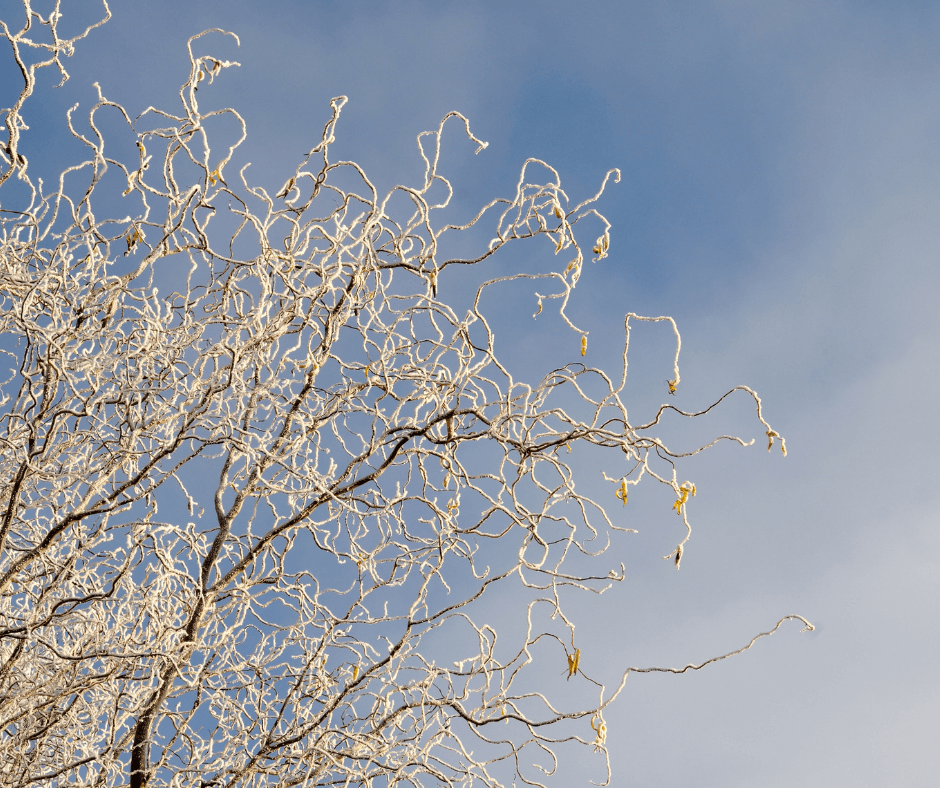
The corkscrew branches of this 30-foot tree weave upward to form a dense oval crown. The lance-shaped leaves repeat the branches’ undulating pattern. As with most deciduous contorted trees, it’s particularly striking in winter, when its bare framework is on full display. Look for its offspring ‘Golden Curls’ and ‘Scarlet Curls’, noted for the conspicuous yellow-chartreuse or coral-red coloration of their first-year stems. These trees also take well to being cut back to within a couple of feet of the ground each spring, a practice known as coppicing. Coppiced dragon’s claw willows produce especially contorted and colorful stems.
Dragon mulberry (Morus alba ‘Unryu’)
A traditional element of Ikebana cut flower arrangements, the gray zig-zag stems of this sparsely fruiting mulberry develop rapidly into a rather unruly mushroom-shaped small tree. A snarled tangle if left to its own devices, it can be strikingly picturesque if skillfully pruned. It also takes well to coppicing, which produces a bumper crop of suitable-for-cutting stems.
Varied Directions larch (Larix ‘Varied Directions’)
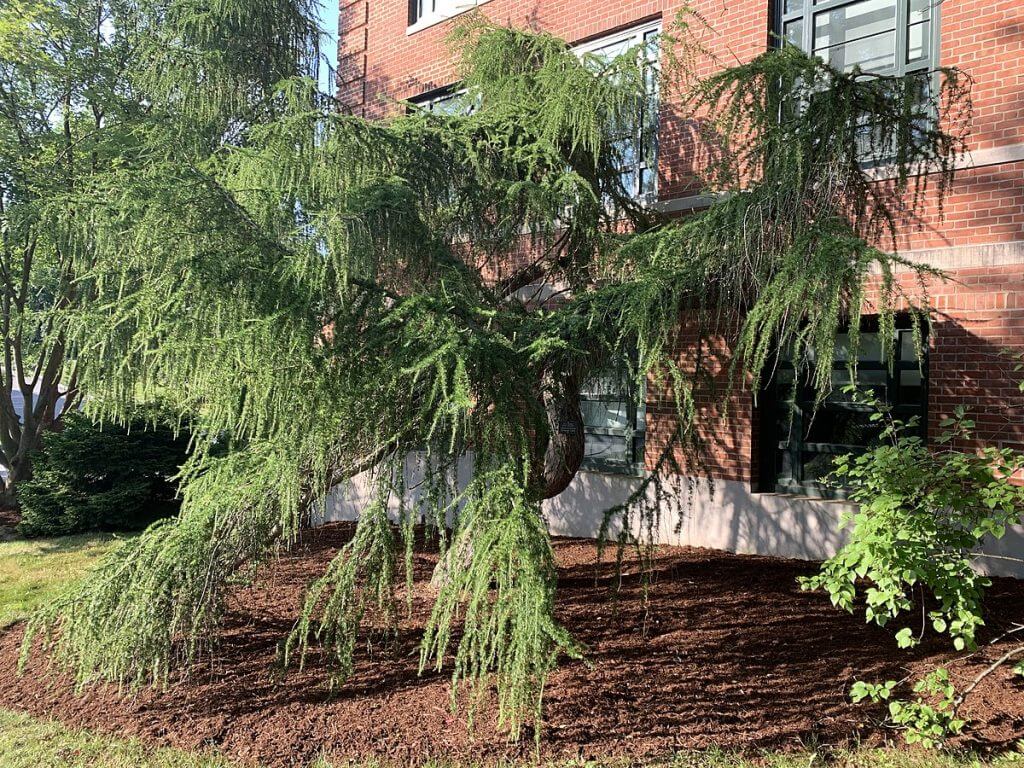
Snaking rather than zigging, the relatively rapidly growing stems of ‘Varied Directions’ undulate at whimsically erratic angles. Staked specimens of this deciduous conifer form a sinuous trunk and an irregular crown that varies markedly from plant to plant, depending on the whimsy of its branches. Unstaked plants sometimes behave as impromptu groundcovers, winding their way horizontally while tossing up the occasional skyward growth. Specimens with upright or grafted trunks develop into small trees; creeping specimens spread indefinitely.
Harry Lauder’s walking stick (Corylus avellana ‘Contorta’)
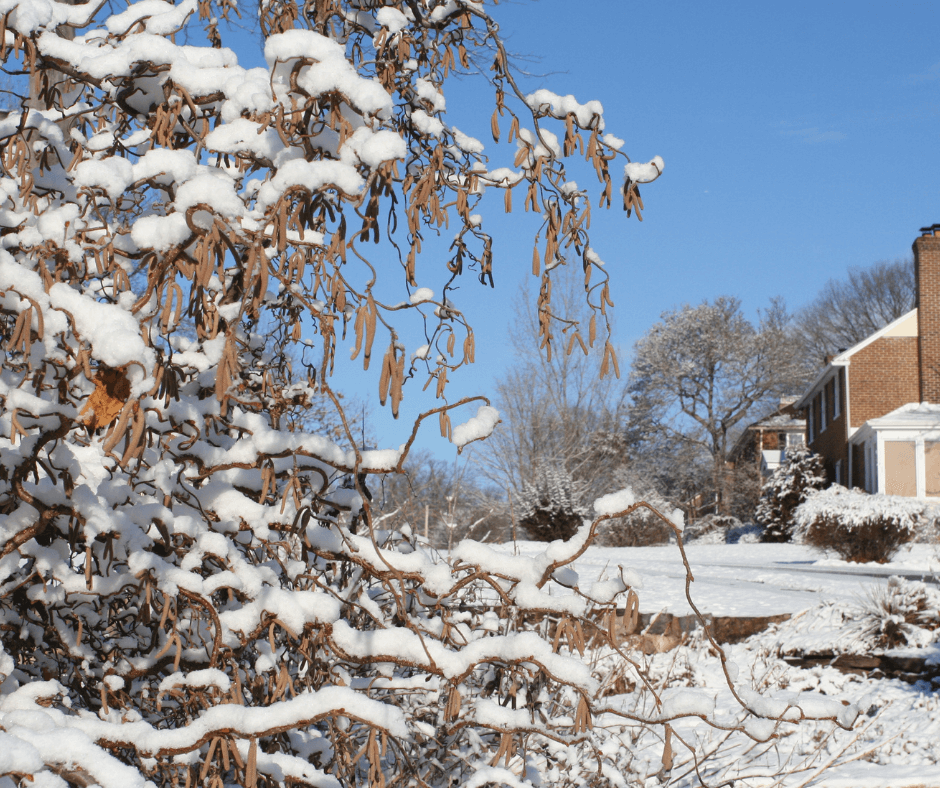
Arguably the most famous twisted tree, this dwarf selection of European filbert slowly forms an 8- to 10-foot rounded specimen with randomly looping branches. Plants gradually assume a weeping habit with age. The cultivar ‘Red Dragon’ has purple leaves and slightly less curvaceous branches, but is otherwise similar to ‘Contorta’.
Flying Dragon hardy orange (Poncirus trifoliata ‘Monstrosa’)
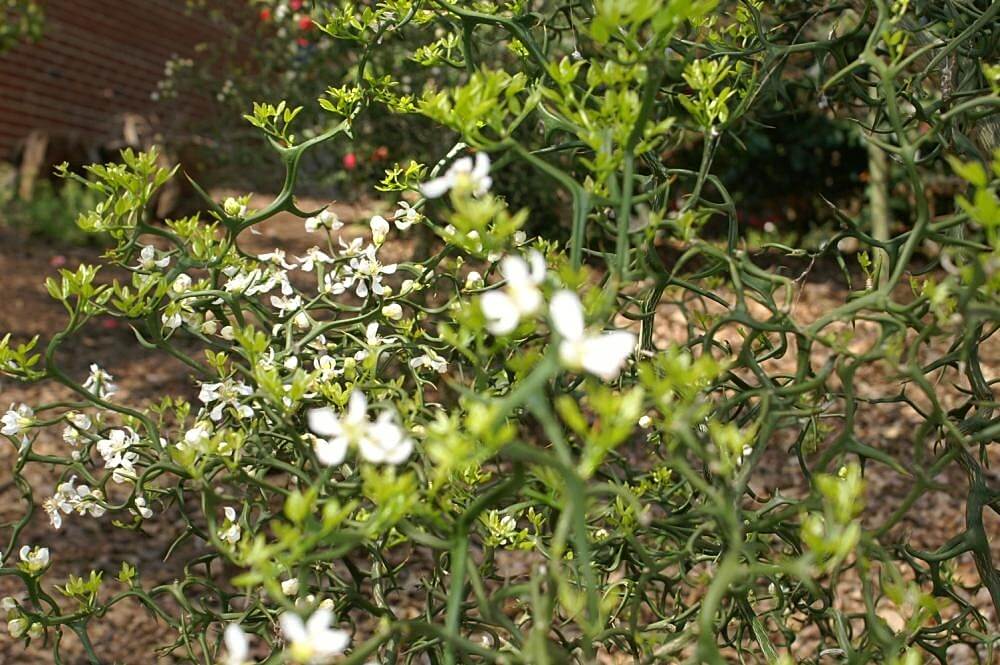
Take a Harry Lauder’s walking stick, give it flattened, green-colored stems heavily armed with hooked spines, and you’d have something along the lines of this. A hardy member of the citrus family, ‘Monstrosa’ produces showy, fragrant white flowers in early spring, which precede the small waxy three-parted leaves. Small, yellow-rinded, sour-fleshed “oranges” ripen in fall. Hardy orange lives up to its name by overwintering as far north as USDA Hardiness Zone 5b.
Whichever twisted tree you choose, be sure to give it a good start by planting it properly. Dig the planting hole to the same depth as the root ball (or shallower in heavy clay soil), and three (or more) times as wide. Refill the hole with the unamended soil, firm gently, and spread a layer of Fafard® Premium Natural & Organic Compost over the planting area. Top with 2 to 3 inches of bark mulch, water well, and re-water when necessary (one or two times a week). And let the twisting begin! (Click here for more tree-planting tips.)

